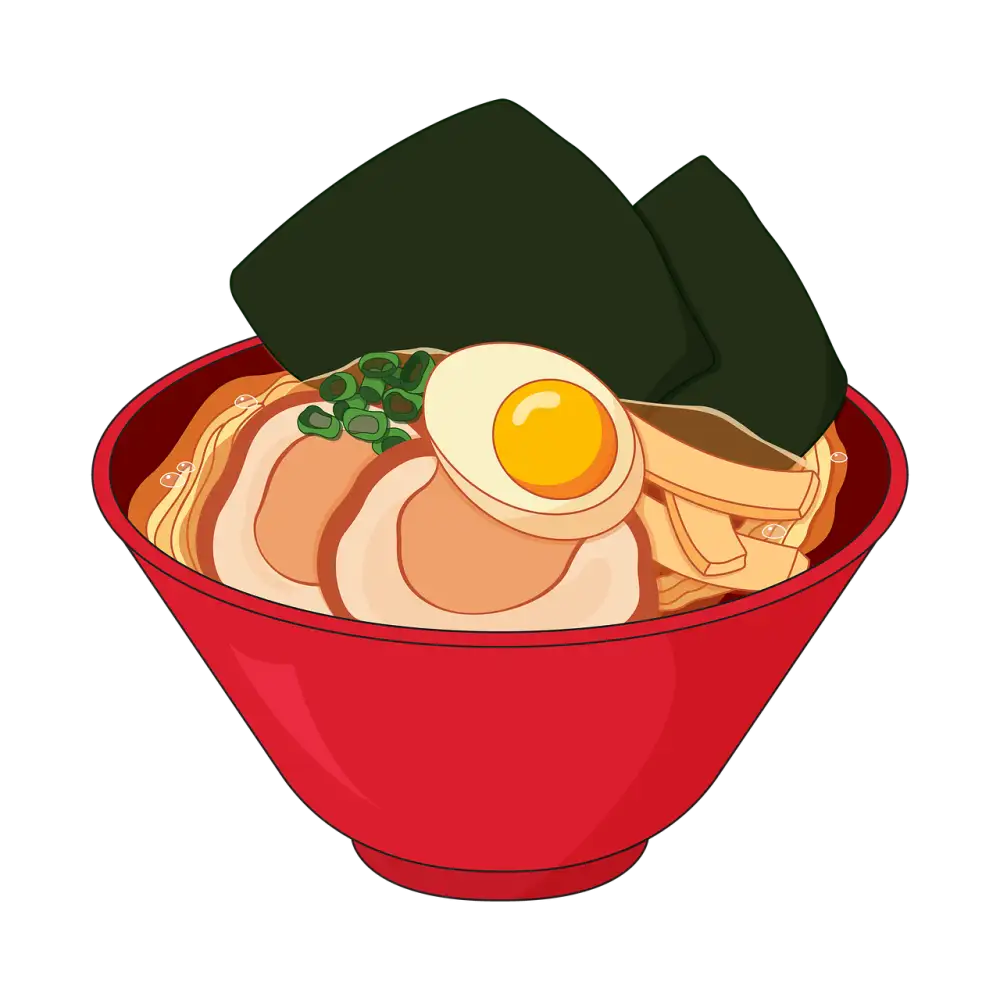Master the Art of Homemade Ramen: Unleash Your Culinary Creativity with this Authentic Dish

Ramen, a beloved Japanese dish, has taken the culinary world by storm. With its rich broth, perfectly cooked noodles, and an array of toppings, it has become a comfort food favorite for many. While ramen is readily available in restaurants worldwide, there's something truly special about making it from scratch in the comfort of your own kitchen. Homemade ramen allows you to unleash your culinary creativity and personalize every aspect of this authentic dish. So put on your apron and get ready to embark on a journey into the art of homemade ramen.
The Art of Making Homemade Ramen
The art of making homemade ramen lies in the careful balance of flavors and textures. It requires patience, precision, and a deep understanding of the ingredients. The key to a perfect bowl of ramen is the broth, which forms the foundation of this dish. Traditional ramen broths are typically made from pork bones or chicken carcasses, simmered for hours to extract every bit of flavor. This slow cooking process allows the collagen in the bones to break down, resulting in a rich and velvety broth. The noodles are another crucial element of homemade ramen. They should be firm yet chewy, with just the right amount of bounce. Making your own noodles from scratch can be a labor-intensive task, but it is well worth the effort. Finally, the toppings and garnishes add depth and complexity to the dish. From tender slices of chashu pork to perfectly soft-boiled eggs, each component contributes to the overall harmony of flavors. Mastering the art of making homemade ramen requires practice and experimentation, but once you unlock its secrets, you will be rewarded with a truly satisfying culinary experience.
Essential Ingredients for Homemade Ramen
To master the art of homemade ramen, it is crucial to have the right ingredients on hand. These key components are what give this dish its signature flavors and textures. Here are the essential ingredients you will need:
1. Noodles: Traditional ramen noodles are made from wheat flour, water, and kansui (alkaline mineral water). Look for fresh or dried ramen noodles in Asian grocery stores or make your own for an authentic touch.
2. Broth: The heart and soul of any good ramen is the broth. There are various types to choose from, such as tonkotsu (pork bone), shoyu (soy sauce), miso (fermented soybean paste), and shio (salt-based). Each has its own distinct flavor profile.
3. Protein: Whether it's tender slices of chashu pork, succulent chicken, or marinated tofu, protein adds depth and richness to your ramen. Choose your favorite or mix and match for a personalized touch.
4. Aromatics: Garlic, ginger, scallions, and onions form the aromatic base of homemade ramen. They infuse the broth with their fragrant flavors and add complexity to each spoonful.
5. Toppings: Ramen wouldn't be complete without an array of toppings. Common choices include soft-boiled eggs, nori seaweed, bamboo shoots, corn kernels, bean sprouts, and mushrooms. Get creative with your selection!
6. Seasonings: Enhance the taste of your ramen with seasonings like soy sauce, mirin (sweet rice wine), sesame oil, chili oil or paste, and vinegar. Adjust these flavors according to your preference for a customized bowl.
By ensuring you have these essential ingredients in your pantry or refrigerator, you can embark on a culinary journey that brings the authentic flavors of Japan right to your own kitchen.
Step-by-Step Guide to Making Homemade Ramen
1. Start by preparing the broth. In a large pot, combine chicken or pork bones with water and bring to a boil. Skim off any impurities that rise to the surface.
2. Add aromatics like onions, garlic, ginger, and dried mushrooms to enhance the flavor of the broth. Simmer for several hours to extract all the rich flavors.
3. While the broth is simmering, prepare the tare, a concentrated seasoning sauce that adds depth to your ramen. Combine soy sauce, mirin, sake, and other desired seasonings in a small saucepan and simmer until it thickens.
4. Cook your choice of protein separately – whether it's tender slices of pork belly or marinated tofu – until they are cooked through and have a golden brown color.
5. Blanch fresh ramen noodles in boiling water for a few minutes until they are al dente. Drain them well and rinse under cold water to stop the cooking process.
6. Assemble your ramen bowl by placing the cooked noodles at the bottom and arranging your toppings around them – sliced green onions, soft-boiled eggs, seaweed sheets, bean sprouts, and any other ingredients you desire.
7. Gently pour the hot broth over the noodles and toppings in your bowl. Drizzle some of your homemade tare on top for an extra burst of flavor.
8. Give everything a gentle stir to ensure all the flavors are well combined. Take a moment to admire your creation before digging in!
Follow this step-by-step guide to create your own delicious bowl of homemade ramen that will rival any restaurant's version!
Tips and Tricks for Perfecting Homemade Ramen
1. Use high-quality ingredients: Invest in fresh, high-quality vegetables, meats, and noodles to enhance the flavor of your homemade ramen.
2. Make your own broth: Take the time to simmer bones, vegetables, and spices to create a rich and flavorful broth. This will elevate the taste of your ramen.
3. Don't overcook the noodles: Cook the noodles until they are al dente, as they will continue to cook slightly in the hot broth. Overcooked noodles can become mushy and lose their texture.
4. Season with care: Taste your broth as you go along and adjust the seasoning accordingly. Remember that a little goes a long way, so start with small amounts of soy sauce or miso paste and build up gradually.
5. Add toppings strategically: Choose toppings that complement each other and add texture to your ramen. Some popular options include sliced pork belly, soft-boiled eggs, nori seaweed, green onions, and bamboo shoots.
6. Experiment with different flavors: Don't be afraid to get creative with your seasonings! Try adding chili oil for a spicy kick or sesame oil for a nutty flavor. You can also experiment with different types of broths like tonkotsu (pork bone) or shoyu (soy sauce).
7. Garnish with finesse: The presentation of your homemade ramen is just as important as its taste. Sprinkle some sesame seeds or microgreens on top for an added visual appeal.
8. Serve immediately: Ramen is best enjoyed piping hot right after it's cooked. Serve it immediately to ensure that all the flavors are at their peak.
By following these tips and tricks, you'll be well on your way to perfecting homemade ramen and impressing your friends and family with your culinary skills!
Creative Variations of Homemade Ramen
While traditional ramen is undeniably delicious, there is no limit to the creative variations you can explore when making homemade ramen. Here are a few ideas to spark your culinary imagination:
1. Vegetarian Delight: For those who prefer a meat-free option, try substituting the traditional pork broth with a flavorful vegetable broth. Load up your bowl with an array of colorful and nutritious vegetables like mushrooms, bok choy, bean sprouts, and corn.
2. Seafood Sensation: Elevate your ramen game by incorporating seafood into the mix. Add shrimp, scallops, or even crab meat to your broth for a delightful oceanic twist. Don't forget to garnish with some nori seaweed for that extra umami flavor.
3. Spicy Kick: If you enjoy a bit of heat in your dishes, consider adding some spice to your homemade ramen. Experiment with chili oil or chili paste to give your broth that fiery kick. Top it off with sliced jalapenos or kimchi for an extra burst of flavor.
4. Fusion Fusion: Get creative by infusing other cuisines into your ramen recipe. Try adding Thai flavors like lemongrass and coconut milk for a unique twist or incorporate Mexican elements like avocado and lime for a zesty surprise.
5. Ramen Bowls on-the-go: Take your homemade ramen on the road by transforming it into a portable meal. Pack individual servings in mason jars or thermos containers, layering noodles, broth, and toppings separately for easy assembly later.
Remember, these are just starting points – feel free to experiment and create your own unique variations based on personal taste preferences and culinary explorations! The possibilities are endless when it comes to unleashing your creativity with homemade ramen!
Serving and Enjoying Homemade Ramen
Once your homemade ramen is ready, it's time to serve and enjoy this delightful dish. Here are a few tips to make the most of your culinary creation:
1. Presentation: Serve your ramen in a large bowl, showcasing the beautiful colors and textures of the ingredients. Arrange them neatly for an appetizing visual appeal.
2. Garnishes: Top your ramen with various garnishes to enhance the flavors and add a touch of freshness. Popular options include sliced green onions, bean sprouts, nori seaweed, soft-boiled eggs, and sesame seeds.
3. Broth customization: Allow your guests to customize their ramen by providing condiments like soy sauce, chili oil, or sesame oil on the side. This way, they can adjust the flavor according to their preference.
4. Noodles first: Encourage everyone to start slurping the noodles first while they're still hot and perfectly cooked. The texture and taste of fresh homemade noodles are simply irresistible.
5. Savor each bite: Remind everyone to take their time and savor each spoonful of ramen. The combination of flavors in every mouthful is what makes this dish truly special.
Remember, homemade ramen is not just a meal; it's an experience that should be enjoyed with all senses. So gather around the table, share stories, and relish in the joy of creating something delicious from scratch.
Health Benefits of Homemade Ramen
While ramen is often associated with being a comfort food, it also offers several health benefits when made at home. Here are some reasons why homemade ramen can be a nutritious choice:
1. Balanced Nutrition: Homemade ramen allows you to control the ingredients, ensuring a well-balanced meal. By incorporating vegetables, lean proteins, and whole grains, you can create a bowl that is packed with essential nutrients.
2. Rich in Protein: Adding protein-rich ingredients like tofu, chicken, or pork to your homemade ramen provides the body with the necessary building blocks for muscle repair and growth.
3. Good Source of Fiber: Using whole grain noodles or adding fiber-rich vegetables like bok choy or mushrooms increases the fiber content of your ramen. This aids digestion and promotes feelings of fullness.
4. Immune-Boosting Ingredients: Many traditional ramen recipes include ingredients like ginger, garlic, and miso paste, which are known for their immune-boosting properties. These ingredients help strengthen your body's defense against illnesses.
5. Hydration: The broth in homemade ramen can help keep you hydrated as it contains water along with flavorful seasonings. Staying hydrated is vital for overall health and helps maintain bodily functions.
Remember to choose high-quality ingredients and control portion sizes to maximize the health benefits of homemade ramen. Enjoy this delicious dish while nourishing your body at the same time!
In conclusion, homemade ramen is not just a dish; it is an experience that allows you to unleash your culinary creativity and indulge in the authentic flavors of Japan. By mastering the art of making homemade ramen, you can create a bowl of comfort and satisfaction that is tailored to your taste preferences.
With the essential ingredients and step-by-step guide provided, you have all the tools necessary to embark on this culinary journey. Remember to experiment with different toppings, broths, and noodles to create your own unique variations of homemade ramen.
Not only is homemade ramen a delicious and satisfying meal, but it also offers numerous health benefits. The combination of protein-rich broth, fresh vegetables, and nourishing noodles make it a wholesome option for any mealtime. Additionally, by making it at home, you have control over the quality and quantity of ingredients used.
So why wait? Grab your apron, gather the ingredients, and let your creativity flow as you dive into the world of homemade ramen. Whether you enjoy it alone or share it with loved ones, this authentic dish will surely bring joy and fulfillment to your dining table. Embrace the delight of homemade ramen and savor every flavorful spoonful.
Published: 27. 11. 2023
Category: Food



